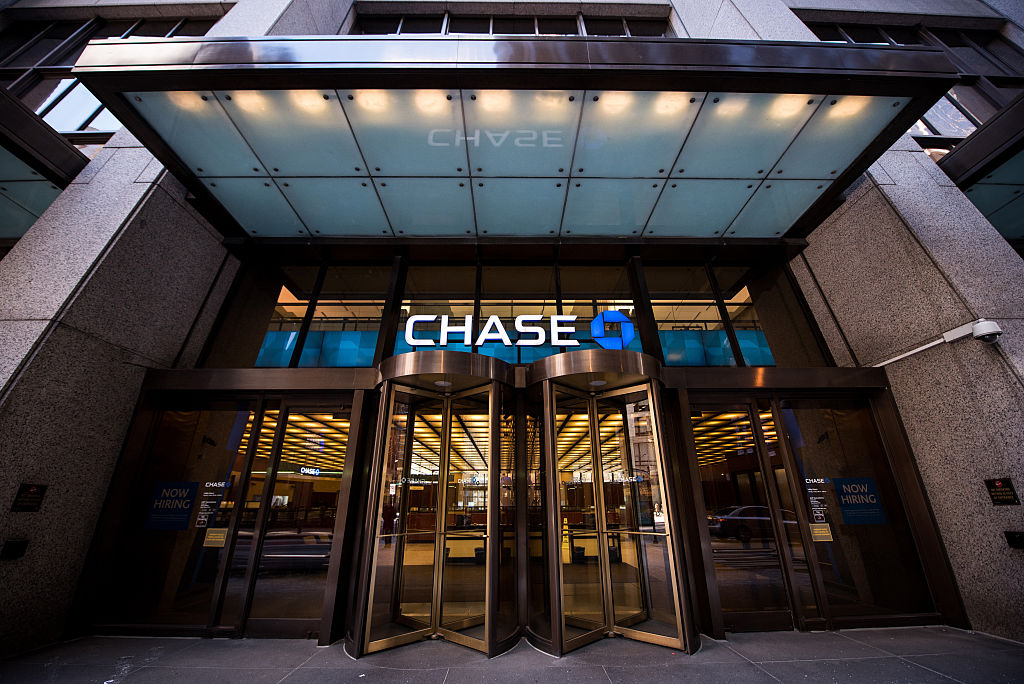Chase introduces a bonus rate on its savings account – but do you qualify?
Chase’s easy-access savings account has become a best buy after the addition of its first-ever bonus rate. But with several restrictions, are you eligible – and why you may need to act fast


JPMorgan-owned bank, Chase, has introduced a bonus rate on its savings account, sending it into the best-buys list.
The app-based bank now boasts one of the best savings accounts on the market as it hikes the return on its easy-access saver from 4.1% to 5.1%, thanks to the addition of its first-ever bonus rate.
It seems Chase is attempting a comeback from a series of changes to its current account perks, which has left customers questioning whether the bank is diluting its benefits. The changes include the eligibility of its much-loved cashback offer and the provider tying its savings rate to the Bank of England’s base rate.
MoneyWeek
Subscribe to MoneyWeek today and get your first six magazine issues absolutely FREE

Sign up to Money Morning
Don't miss the latest investment and personal finances news, market analysis, plus money-saving tips with our free twice-daily newsletter
Don't miss the latest investment and personal finances news, market analysis, plus money-saving tips with our free twice-daily newsletter
So, is banking with the provider still worth it? While the cashback rules are more strict, the bank’s good customer service and fee-free spending abroad still remain. Plus, the addition of a bonus interest rate could make it more worthwhile.
But, the bonus rate is subject to some restrictions. Find out if you qualify for Chase’s easy-access savings account and the 1% bonus rate - and if you do, why now is prime time to bag the rate.
How does the Chase easy-access account work?
Chase has introduced a 1% bonus rate on its easy-access saver, which means it now offers a 5.1% AER return on your cash – but the account is only available to existing Chase customers.
You need to have been a Chase current account holder on or before 29 February 2024. But, you can’t have held a Chase savings account since 8 March 2024, or if you have, your Chase savings balance must have been below £500 as of 8 March 2024.
The bonus of 1% applies to the headline rate until 4 November 2024 – after this, it will revert back to the original rate. But remember, the headline rate, which currently stands at 4.1%, is variable, so this could change at any time.
The savings account has no minimum deposit and you can save up to £500,000 – but bear in mind only £85,000 is protected by the Financial Services Compensation Scheme (FSCS).
The savings account must be opened in the Chase app.
Why do I need to act quickly to bag Chase’s rate?
There are two reasons to act fast to secure Chase’s bonus. First, the Bank of England’s base rate is likely to go in only one direction this year, and that’s down.
This means savings rates are also set to fall. So it could make sense to secure a 1% extra bonus that’s guaranteed until November while you can.
The second reason is that Chase’s underlying variable savings rate is going to change next month, and be tied to the Bank of England’s interest rate. From 13 May, the rate will always be 1.15% below the base rate.
There are a couple of things to take note of here.
Currently, base rate stands at 5.25%, and with Chase’s 1% bonus rate, the app’s 5.1% rate means it is returning savers just 0.15% below the base rate – pretty impressive.
Without the bonus rate, Chase’s headline savings rate is 4.1%, already 1.15% lower than the base rate.
Furthermore, Chase has strategically set the date for pegging its easy-access saver to the base rate to four days after the Bank of England’s next MPC meeting - when it will announce where interest rates will go.
Some experts are predicting that the base rate will fall in May. According to Mark Hicks, head of Active Savings at Hargreaves Lansdown, base rate is “expected to finish the year down from its current level of 5.25% to 4.5%”.
He adds: “If the Bank of England does go ahead with three rate cuts this year, we can expect easy-access rates to settle around 4-4.5%.”
So, let’s say the base rate drops to 4.5% before 4 November. It means the Chase savings account will offer a return of 4.35% (including the 1% bonus). But, if this is the base rate after the bonus disappears on 4 November, Chase savers will earn a mere 3.35%.
If we knock the base rate down even further to 4% after the bonus rate gets pulled, Chase savers will earn just 2.85%.
With the 1% bonus staying put for six months, it’s a good window for Chase customers to take advantage of the savings account, as the bonus pushes the overall Chase savings rate to be competitive compared to the wider market.
And if the Chase account becomes less competitive and you spot a better deal elsewhere in future, there are no restrictions or penalties to move your money.
How does the Chase easy-access saver compare to the rest of the market?
The Chase easy-access account is now among the best savings accounts, coming in third on our best-buy table.
Here’s how it compares to its competitors.
| Provider | Rate AER | Minimum deposit | Withdrawals |
|---|---|---|---|
| Cahoot | 5.2% | £1 | Unlimited withdrawals |
| Ulster Bank | 5.2% | £5,000 | Unlimited withdrawals |
| Chase | 5.1% | No minimum deposit | Unlimited withdrawals |
While Chase doesn’t have the highest interest rate, it still looks like a desirable offering. Santander-owned Cahoot restricts savers to saving up to £3,000. After this sum, no interest is earned on your cash. And with Ulster Bank, you need at least £5,000 to open the account.
MoneyWeek has also been tracking the best savings rates and has noticed three easy-access best-buy products pulled, and four providers drop their rates over the past 10 days.
It seems Chase has gone against the wider market by upping its rate via the introduction of a 1% bonus to attract customers.
If you’re willing to fix your cash for a year, you may be surprised to learn that you’re unlikely to benefit from a higher return. Currently, the best one-year fixed savings rate is 5.18% with Beehive Money.
Hicks says: “The trends that we have seen so far this year, of lower rates and little differential between fixed and variable, will likely continue throughout the remainder of 2024.”
Get the latest financial news, insights and expert analysis from our award-winning MoneyWeek team, to help you understand what really matters when it comes to your finances.
Vaishali has a background in personal finance and a passion for helping people manage their finances. As a former staff writer for MoneyWeek, Vaishali covered the latest news, trends and insights on property, savings and ISAs.
She also has bylines for the U.S. personal finance site Kiplinger.com and Ideal Home, GoodTo, inews, The Week and the Leicester Mercury.
-
 Goodwin: A superlative British manufacturer to buy now
Goodwin: A superlative British manufacturer to buy nowVeteran engineering group Goodwin has created a new profit engine. But following its tremendous run, can investors still afford the shares?
-
 Is US stock market exceptionalism over?
Is US stock market exceptionalism over?US stocks trailed the rest of the world in 2025. Is this a sign that a long-overdue shift is underway?
